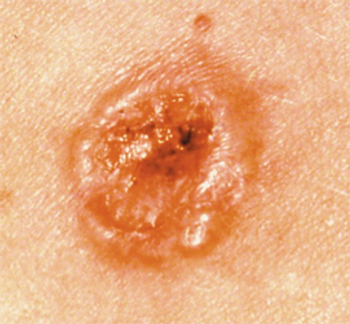
Adding Tiragolumab to Atezolizumab Plus Chemotherapy Does Not Improve Outcomes in Small Cell Lung Cancer
The addition of tiragolumab to atezolizumab plus carboplatin and etoposide did not yield improved overall survival or progression-free survival rates in patients with extensive-stage small cell lung cancer.
Adding tiragolumab to atezolizumab (Tecentriq) plus carboplatin and etoposide (CE) did not result in improved outcomes compared with atezolizumab plus CE in patients with untreated extensive-stage small cell lung cancer (ES-SCLC), according to findings from the randomized phase 3 SKYSCRAPER-02 trial (NCT04256421).
“The vast majority of patients with extensive-stage small cell lung cancer continue to suffer disease progression, with a median of about 5.5 months from the time of diagnosis. So there’s clearly a major unmet need for the treatment of these patients,” study author Charles M. Rudin, MD, PhD, chief of the Thoracic Oncology Service at Memorial Sloan Kettering Cancer Center, said while presenting the findings at the 2022 American Society of Clinical Oncology Annual Meeting.
The trial comprised 490 patients who were randomized to receive tiragolumab, atezolizumab and CE (n = 243) or placebo plus atezolizumab and CE (n = 247). Co-primary endpoints were overall survival (OS) and investigator-assessed progression-free survival (PFS) in a primary analysis set that actually excluded those patients with brain metastases at baseline.
Secondary endpoints were PFS and OS in the overall analysis set, including those with brain metastases.
“Brain metastases were present in about 19% of the patients on both arms at diagnosis, and about two-thirds of these were untreated at the time they started on systemic therapy,” Rudin said.
Results from a February 2022 cutoff (median 14.3-month follow-up) of the trial showed that at a median follow-up of 13.9 months, median progression-free survival (PFS) was 5.4 months in the tiragolumab-containing regimen, compared with 5.6 months in the atezolizumab plus CE group (P = .3504) in the patients enrolled in the study without the history of or had brain metastases at baseline.
For all patients in the study, median PFS was 5.1 months and 5.4 months in the tiragolumab-containing and non-containing arms, respectively.
In the cohort without brain metastases, median OS was the same (13.6 months) in both the tiragolumab and non- tiragolumab arms. In the full study population, the median OS was 13.1 months for patients given tiragolumab plus atezolizumab plus CE, compared to 12.9 months in the placebo plus atezolizumab and CE arm.
“I think I can summarize these [findings] by saying there doesn’t appear to be any subgroup that selectively benefits from the addition of tiragolumab,” Rudin said. “All of the confidence intervals overlap.”
Grade 3 or 4 treatment-related adverse events (TRAEs) occurred in 52.3% of patients in the tiragolumab arm and 55.7% in the placebo arm. Grade 3 TRAEs occurred in 0.4% of the tiragolumab arm and 2.0% in the placebo arm.
Five percent of patients treated with the tiragolumab-containing arm had TRAEs that led to treatment discontinuation, compared with 5.3% in the placebo arm.
“We saw what we expected to see in terms of toxicity of the chemotherapy backbone and atezolizumab, [and there’s] really not much difference in terms of safety signals between the 2 arms,” Rudin said.
Ultimately, the lack of benefit seen with the addition of tiragolumab on the SKYSCRAPER-02 trial mimic results previously seen on the EMPOWER-3 trial, according to Rudin.
“From a clinical standpoint, based on these data, our conclusion is that targeting TIGIT in extensive-stage small-cell lung cancer does not appear to be therapeutically relevant,” Rudin said. “We’re continuing to follow these folks and biomarker analyses will be forthcoming. I think those will be interesting in informing us about the subgroups that benefits from immunotherapy.”
Reference
Rudin CM, Liu SV, Lu S, et. al. SKYSCRAPER-02: Primary results of a phase III, randomized, double-blind, placebocontrolled study of atezolizumab (atezo) + carboplatin + etoposide (CE) with or without tiragolumab (tira) in patients (pts) with untreated extensive-stage small cell lung cancer (ES-SCLC).
Newsletter
Stay up to date on recent advances in the multidisciplinary approach to cancer.


















































































